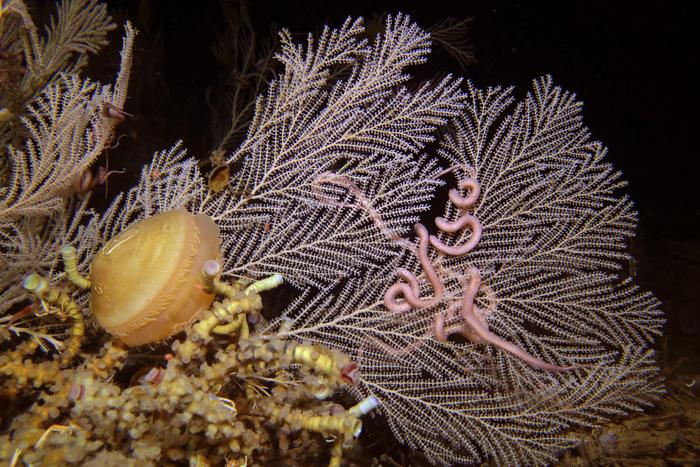There are some seriously strange lifeforms lurking in the depths of our oceans – ghost sharks and upside-down isopods, anyone? Now, two more join their ranks as researchers discover a pair of new bacteria species nestled in the tissue of deep-sea corals in the Gulf of Mexico – and they’re just as bizarre as befits a deep-sea germ.
With an extremely reduced genome, and lacking the ability to obtain energy from carbohydrates, it’s astonishing that the two new species can even function. The team stumbled upon them while studying colonies of the soft coral species Callogorgia delta and Callogorgia Americana, which exist at depths ranging from 300 to 900 meters (984 to 2,953 feet), where it is completely dark.
Named Oceanoplasma callogorgiae and Thalassoplasma callogorgiae, the novel bacteria have amazingly few protein-coding genes – just 359 and 385, respectively. In comparison, we have around 21,000, and the bacterium Escherichia coli contains more than 4,000.
“These species are impressive examples of how few genes are needed for a functional organism,” co-lead researcher Professor Iliana Baums said in a statement.
“These bacteria don’t even carry genes for normal carbohydrate metabolism, in other words, for obtaining energy from carbohydrates – something that basically every living organism has,” Baums added.
So exactly how are the deep-sea weirdos doing it? As far as we know, their only source of energy is the amino acid arginine, provided by the host coral alongside other essential nutrients. However, that’s far from mystery solved.
“The breakdown of this amino acid provides only tiny amounts of energy,” Dr Samuel Vohsen, the other research lead, explained. “It is astonishing that the bacteria can survive on so little.”

The coral Callogorgia delta alongside tubeworms and a clam. This particular community was discovered in 2016 at a depth of 624 meters (2,047 feet) in the Mississippi Canyon, Gulf of Mexico.
While their genetics and metabolism are still something of an enigma, we do know a little more about their taxonomic classification. They belong to the mollicutes class of bacteria, which often parasitize plants, animals, and humans – and in some cases can cause disease. In addition to this, genetic analyses suggest the microbes should be assigned to their own family, which the researchers propose is called Oceanoplasmataceae.
As for whether they are purely parasitic or are involved in some sort of mutually beneficial symbiosis with the corals they inhabit, remains unclear. However, the team did discover that the bacteria use CRISPR/Cas defense mechanisms – yes, the same gene editing systems that have revolutionized biotechnology – to remove foreign DNA. It’s possible that these mechanisms may also be useful to the host corals, helping to protect them against pathogens.
It’s also been proposed that the bacteria may provide nitrogen to their host when they break down arginine.
By furthering our understanding of this potential symbiotic relationship, we could glean extra insights into coral ecology and evolution, both of which are crucial in its conservation.
The study is published in the journal Nature Communications.
Source Link: Two New Deep Ocean Coral-Dwelling Bacteria Species With Incredibly Tiny Genomes Discovered